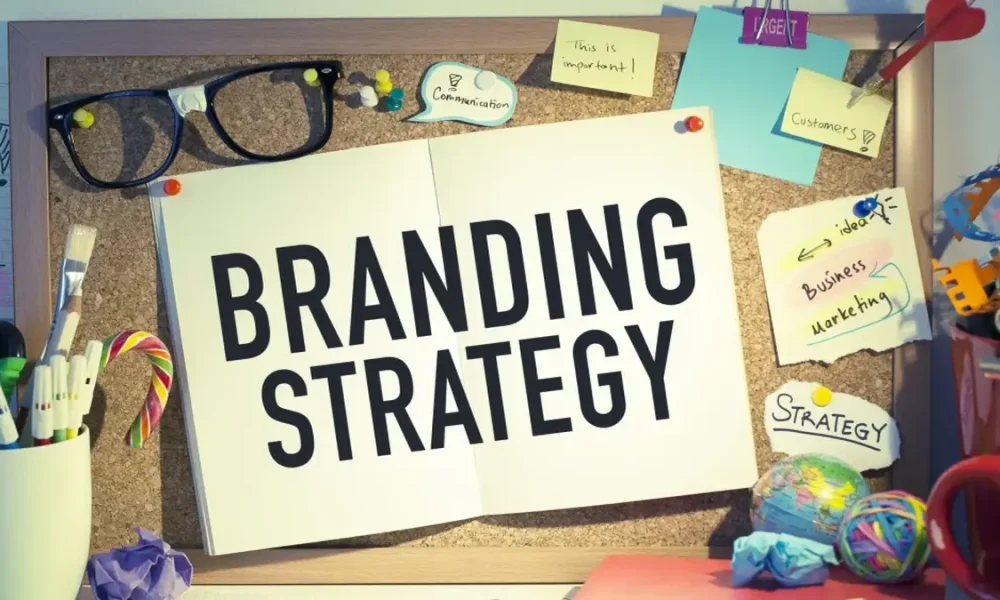Building a strong brand identity is more than just a memorable logo or catchy tagline. A brand that sticks in people’s minds reflects consistency, authenticity, and purpose. If you want your business to stand out from competitors, attract loyal customers, and communicate your values clearly, these proven branding strategies will help you lay a foundation that lasts.
Let’s break down the best branding strategies to build a strong brand identity in Canada and see how you can apply them to make your business stand out with confidence.
1. Define Your Core Brand Story and Values
Before designing anything visual or writing copy, you need clarity on what your brand stands for. Ask yourself:
- What problem are you solving?
- What promises do you make to your customers?
- What values matter most to your business?
When you define your brand story and your values clearly, everything else from logo design to customer service becomes aligned. Canadians appreciate brands that are honest, transparent, and operate with integrity. Integrating values like sustainability, community, or local support can boost connection with your audience.
2. Understand and Reflect the Canadian Market
Canada is a diverse country, with different regions, languages, cultures, and consumer preferences. A strong brand identity in Canada must reflect this diversity.
- If you serve Quebec, bilingual messaging adds trust and clarity.
- Respect regional tastes and symbols, avoid generic or stereotyped visuals.
- Highlight local elements where appropriate natural landscapes, community culture, or Canadian values.
Research shows Canadian consumers respond well to brands that show cultural sensitivity and local relevance.
3. Create a Consistent Visual Identity
Your visual identity is what people remember your logo, color palette, typography, imagery, graphics. Consistency builds recognition.
Ensure that your visual elements look coherent across all touchpoints: website, social media, printed materials, signage. When customers see your colors, fonts, style, they should instantly think of your brand.
This also includes defining rules about how visuals are used, logo spacing, imagery style, color use, etc. so your brand always looks polished and trustworthy.
4. Develop a Brand Voice That Resonates
What you say is as important as how you look. Your brand voice tone, style, personality should reflect your brand identity and speak directly to your audience.
Decide: are you friendly and casual, professional and authoritative, playful and creative? Use this voice in your website copy, social media posts, newsletters, and customer communications. It helps people feel like you’re real and consistent.
An authentic, consistent voice helps build trust and supports emotional connection with your customers.
5. Use Content Marketing and Storytelling
Storytelling is one of the strongest tools you have for building brand identity. Share stories about how your business started, challenges you’ve overcome, behind-the-scenes glimpses, customer journeys.
Produce blog posts, case studies, video content, testimonials. These help people see the human side of your brand, which builds credibility.
Also, good content works as a foundation for SEO and brand visibility blogs and landing pages help you rank for relevant keywords and attract organic traffic.
6. Prioritize Customer Experience and Trust
Brand identity is reinforced through every interaction the customer has with your business. That includes website usability, customer service, delivery, returns, support.
If your brand promise is reliability, your service must be consistent. If you promise premium, your photos, packaging, and all touchpoints must reflect that. Customers notice mismatches quickly.
Also collect feedback and reviews; when people see others recommending you, trust grows.
7. Be Visible and Consistent Across All Channels
Your brand identity should be consistent whether someone finds you via Instagram, Google search, in-person, or an ad.
Maintain consistent visuals, voice, messaging across your website, social media, email, advertising, and any offline presence.
Also, invest in local SEO so people in cities like Toronto, Vancouver, Calgary, or your market can find you when searching for services or products. Include location keywords in content, claim local business profiles, collect location-based reviews.
8. Integrate Social Responsibility and Authentic Practices
More people in Canada care about how brands impact society and the environment. Showing that you care through ethical sourcing, sustainability, and supporting the community builds trust.
Be honest about what you do, avoid exaggerated claims, be transparent about your practices. Authentic corporate social responsibility helps your identity become more meaningful.
9. Measure, Evaluate, and Evolve
Branding isn’t a one-time effort. You need to track brand perception, customer feedback, engagement metrics, and sales trends.
Set key performance indicators (KPIs) like brand awareness score, customer satisfaction, social media mentions, repeat purchase rates. Revisit your brand strategy annually or whenever you make big changes.
Evolving keeps your brand relevant in changing markets. Canadian consumer behavior shifts, new trends emerge, keeping flexible helps you stay ahead.
Conclusion
Building a strong brand identity in Canada is a journey that combines clarity, consistency, and connection. By defining your core values, respecting regional diversity, creating a visual identity, and delivering on your promises, your brand becomes memorable and trusted.
If you’re ready to develop an identity that reflects your vision and resonates with your audience, Enter Productions can help. We specialize in branding, visual storytelling, video production, and creative strategy tailored for Canadian businesses. Start building your brand identity that stands out now.
FAQs
What is brand identity vs. brand image?
Brand identity is how you want your business to be perceived—your values, personality, visuals. Brand image is how your audience actually perceives you. Strong branding aligns both.
How long does it take to build a strong brand identity?
Usually several months. It involves strategy, visual design, content creation, and real customer interactions. Consistency over time helps cement identity.
Should small businesses invest heavily in branding early?
Even on a modest budget, clear branding sets you up for growth. It makes marketing more effective and helps you attract the right customers.
How often should brand visuals or messaging be updated?
Every few years or when major changes occur—new product lines, repositioning, expanded markets. Updates should feel like evolution, not total overhaul.
Can branding help with SEO and search visibility?
Absolutely. Consistent voice, good content, local SEO, quality visuals—all help search eng







